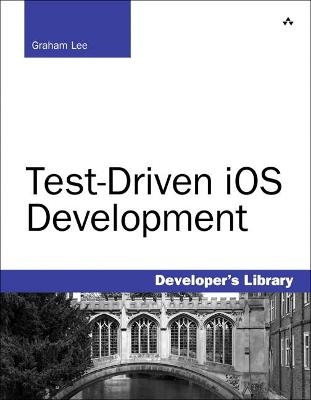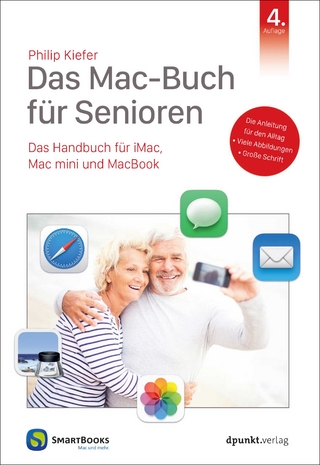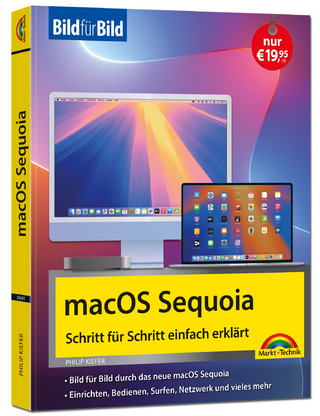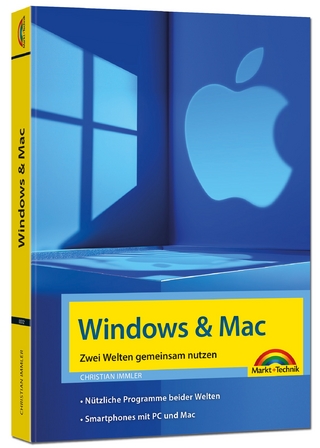
Test-Driven iOS Development
Addison-Wesley Educational Publishers Inc (Verlag)
978-0-321-77418-7 (ISBN)
- Keine Verlagsinformationen verfügbar
- Artikel merken
Long-time iOS/Mac developer Graham Lee helps you rapidly integrate TDD into your existing processes using Apple’s Xcode 4 and the OCUnit unit testing framework. He guides you through constructing an entire Objective-C iOS app in a test-driven manner, from initial specification to functional product. Lee also introduces powerful patterns for applying TDD in iOS development, and previews powerful automated testing capabilities that will soon arrive on the iOS platform. Coverage includes
Understanding the purpose, benefits, and costs of unit testing in iOS environments
Mastering the principles of TDD, and applying them in areas from app design to refactoring
Writing usable, readable, and repeatable iOS unit tests
Using OCUnit to set up your Xcode project for TDD
Using domain analysis to identify the classes and interactions your app needs, and designing it accordingly
Considering third-party tools for iOS unit testing
Building networking code in a test-driven manner
Automating testing of view controller code that interacts with users
Designing to interfaces, not implementations
Testing concurrent code that typically runs in the background
Applying TDD to existing apps
Preparing for Behavior Driven Development (BDD)
The only iOS-specific guide to TDD and unit testing, Test-Driven iOS Development covers both essential
concepts and practical implementation.
Graham Lee's job title is “Smartphone Security Boffin,” a role that requires a good deal of confidence in the code he produces. His first exposure to OCUnit and unit testing came around six years ago, as test lead on a GNUstep-based server application. Before iOS became the main focus of his work, Graham worked on applications for Mac OS X, NeXTSTEP, and any number of UNIX variants. This book is the second Graham has written as part of his scheme to learn loads about computing by trying to find ways to explain it to other people. Other parts of this dastardly plan include speaking frequently at conferences across the world, attending developer meetings near to his home town of Oxford, and volunteering at the Swindon Museum of Computing.
Dedication v
Preface xii
Acknowledgments xiv
About the Author xiv
1 About Software Testing and Unit Testing 1
What Is Software Testing For? 1
Who Should Test Software? 2
When Should Software Be Tested? 6
Examples of Testing Practices 7
Where Does Unit Testing Fit In? 7
What Does This Mean for iOS Developers? 11
2 Techniques for Test-Driven Development 13
Test First 13
Red, Green, Refactor 15
Designing a Test-Driven App 18
More on Refactoring 19
Ya Ain’t Gonna Need It 19
Testing Before, During, and After Coding 21
3 How to Write a Unit Test 23
The Requirement 23
Running Code with Known Input 24
Seeing Expected Results 26
Verifying the Results 26
Making the Tests More Readable 28
Organizing Multiple Tests 29
Refactoring 32
Summary 34
4 Tools for Testing 35
OCUnit with Xcode 35
Alternatives to OCUnit 46
Google Toolkit for Mac 46
GHUnit 47
CATCH 48
OCMock 50
Continuous Integration 52
Hudson 53
CruiseControl 57
Summary 58
5 Test-Driven Development of an iOS App 59
Product Goal 59
Use Cases 60
Plan of Attack 63
Getting Started 64
6 The Data Model 67
Topics 67
Questions 73
People 75
Connecting Questions to Other Classes 76
Answers 81
7 Application Logic 87
Plan of Attack 87
Creating a Question 88
Building Questions from JSON 102
8 Networking Code 113
NSURLConnection Class Design 113
StackOverflowCommunicator
Implementation 114
Conclusion 125
9 View Controllers 127
Class Organization 127
The View Controller Class 128
TopicTableDataSource and TopicTableDelegate 133
Telling the View Controller to Create a New View Controller 149
The Question List Data Source 158
Where Next 170
10 Putting It All Together 171
Completing the Application’s Workflow 171
Displaying User Avatars 185
Finishing Off and Tidying Up 189
Ship It! 199
11 Designing for Test-Driven Development 201
Design to Interfaces, Not Implementations 201
Tell, Don’t Ask 203
Small, Focused Classes and Methods 204
Encapsulation 205
Use Is Better Than Reuse 205
Testing Concurrent Code 206
Don’t Be Cleverer Than Necessary 207
Prefer a Wide, Shallow Inheritance Hierarchy 208
Conclusion 208
12 Applying Test-Driven Development to an Existing Project 209
The Most Important Test You’ll Write Is the First 209
Refactoring to Support Testing 210
Testing to Support Refactoring 212
Do I Really Need to Write All These Tests? 213
13 Beyond Today’s Test-Driven Development 215
Expressing Ranges of Input and Output 215
Behavior-Driven Development 216
Automatic Test Case Generation 217
Automatically Creating Code to Pass Tests 219
Conclusion 220
Index 221
| Erscheint lt. Verlag | 17.5.2012 |
|---|---|
| Reihe/Serie | Developer's Library |
| Verlagsort | New Jersey |
| Sprache | englisch |
| Maße | 180 x 230 mm |
| Gewicht | 400 g |
| Themenwelt | Informatik ► Betriebssysteme / Server ► Macintosh / Mac OS X |
| Informatik ► Office Programme ► Outlook | |
| Informatik ► Programmiersprachen / -werkzeuge ► Mac / Cocoa Programmierung | |
| Informatik ► Software Entwicklung ► Mobile- / App-Entwicklung | |
| Informatik ► Weitere Themen ► Smartphones / Tablets | |
| Technik ► Nachrichtentechnik | |
| ISBN-10 | 0-321-77418-3 / 0321774183 |
| ISBN-13 | 978-0-321-77418-7 / 9780321774187 |
| Zustand | Neuware |
| Informationen gemäß Produktsicherheitsverordnung (GPSR) | |
| Haben Sie eine Frage zum Produkt? |
aus dem Bereich


